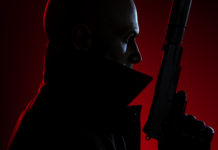Platforms: PS4, PC, Xbox One (reviewed)
Publisher: Electronic Arts
Developer: DICE
Introduction:
In 2008, EA published a game that achieved the rare title of “cult classic”, a moniker usually reserved for films. Whilst there have been a handful of cult classic videos games, none of them felt as important as Mirror’s Edge. It was released at the start of the rise of modern first person shooters, with Call of Duty: Modern Warfare 2 merely a year away. It starred a female protagonist who did more running than fighting, and only wielded a gun for a handful of seconds. It was set in a futuristic city where everyone’s communications were monitored, and the only way anything could be kept secret anymore was to hire freelance Runners to hand deliver messages by sprinting across rooftops. It was freaking awesome. I loved it so much, I made a fan film in my Freshman year of college, the fruits of that labor viewable here.
So when EA announced 2 years ago they’d be making another game in the series, I, like many other fans, couldn’t have been more excited. With the game finally released, I couldn’t be more disappointed.

Treading lightly:
It didn’t take too long for me to realize that something was missing from Catalyst. One of the most resonating design choices in the original game was when you fell: the roar of Faith’s body tearing through the air, her panicked screams, and the resounding thud when her body finally hit the ground. It caused actual anxiety, and would force me to improve my parkour skills so I didn’t have to hear that awful impact. That impact was removed from Catalyst, and I would come to find out during my 10 hour play through that this reboot/prequel game lacked impact in almost every other aspect.
Whilst this is a prequel of Mirror’s Edge, it is also a reboot. Faith remains relatively the same, but almost everything else has been retooled. The entire supporting cast of Runners is different from the ones Faith rolls with in the original, and the way in which the city of Glass works is quite different, but the basic premise is the same, and this time you get to show off your parkour skills in an open world. The thing I most enjoyed about this game was actually the story and the setting. That’s not saying it’s great, but it’s a totally enjoyable tale that sets itself apart from the original. The characters are interesting, if generic, and I was invested in Faith’s new plight.
The open world’s greatest strength is that you get to know the city so much better than in Mirror’s Edge, since you’re constantly revisiting the same parts. You get to know the different districts, and the more you traverse them the easier it is to move through them. Which is important, because the game is constantly working against you in other ways to make sure that doesn’t happen.

One step forward, two steps back:
The open world, however, makes something very clear: there has been no actual refinement of the gameplay. Faith, with the exception of now having a grappling hook, basically handles exactly as she did 8 years ago. Which means that, yes, it’s exhilarating when you’re pulling off perfectly timed moves and the city is your personal playground, but you’ll find yourself just as often breaking your streak because the game didn’t respond quickly enough to your inputs.
Much like the more popular Assassin’s Creed series, which has consistently received criticism for its lack of innovation in its parkour, Catalyst may have added a ton of extra content and techniques, but the core gameplay, which is imperative to the player’s enjoyment, is just as clunky as it’s always been. And those new collectibles, time trials and side missions you find all over the city? They only add to the break of the flow, distracting the player from their main focus which is to keep moving.

If only Catalyst was as polished as the city of Glass:
Glass is a very striking city, with its clash of bright whites and vivid colors, but when you aren’t sprinting past all of it and actually stop to study the environment, you’d be hard pressed to see any improvement over the original game. Texture pop-in is atrocious, with sometimes entire buildings lacking any design until you move right in front of them. When that texture finally does appear, its stunning how something so smooth could look so rough.
The world is slightly more populated now with the addition of characters standing awkwardly on rooftops, just waiting for Faith to come chat with them and accept their side quests. But the character designs are even worse than the buildings, with facial animations barely existent, and the textures of their skin sometimes seemingly out of focus.
The biggest transgressor is combat.
DICE made the decision to remove gunplay from the game; enemies still shoot at you, but you can no longer pick up their gun and shoot back. This was a smart choice, as the gunplay was the weakest aspect of the original’s combat. However, it does nothing to fix the inherent problems with the numerous conflicts in Catalyst, which honestly feel like it plays a lot worse than its predecessor.
The only time combat even remotely works is when it doesn’t happen at all. If you’ve built up your focus shield, which happens when you’ve obtained a movement streak, you’re able to push opponents aside and run right through them. Which whenever you get the chance, I recommend you do! Because when you stop moving, and enter stationary combat. Oh boy. You’re in for a world of hurt.

Packing no punch:
There are a multitude of enemy types in Mirror’s Edge Catalyst, everything from basic grunts with batons, to pulse rifle totting henchmen and enforcers with shockwave gauntlets. The method to taking them down, however, is universal. Dance around them, and roundhouse kick them in the head, preferably into another foe or over a ledge, as the AI is seemingly all too ready to leap to their doom.
The ragdoll physics are so prominent, that each enemy seems to have nothing more to them and while it’s humorous to watch them flail about, especially when they’re gently nudged by another opponent and immediately begin to spasm, it wears itself thin very quickly. Combine this with the fact that, just like the free running, it’s extremely easy for the flow of combat to be broken. There were numerous times when I found myself lining up a heavy attacks, only to miss and be facing the completely wrong direction. And as the game progresses, it only ends up throwing more enemies at you, all increasing in difficulty. The latter half is a slog, taking a game which is designed for speed and efficiency and slowing it to a crawl.

Verdict:
The only people I’d recommend Mirror’s Edge Catalyst to are newcomers to the franchise. The parkour, when it works, is still just as awesome, but the game has just too many detractors for the fans of the original.
The cast has all the characters you’d expect; the protective father figure, the snarky rival, the IT support with social issues, and the leader of another rebel faction who’s all about the ends justifying the means. So whilst the story is fun, it’ll ultimately just get shuffled into your brain with all the other tales you’ve read or watched over the years that are just like it.
There’s nothing here to really make it feel like an improvement.
It doesn’t help the fact that there have been multiple games, like Dying Light, that take the first person parkour mechanic and do something much more interesting with it. And just like the zombies in that game, off the franchise wasn’t dead before, I think it almost certainly is now.









